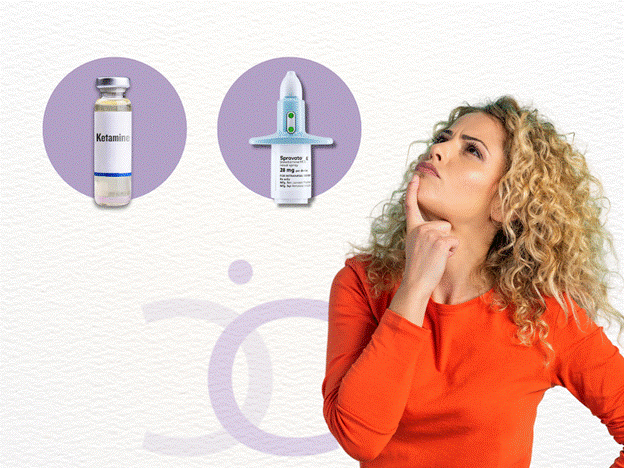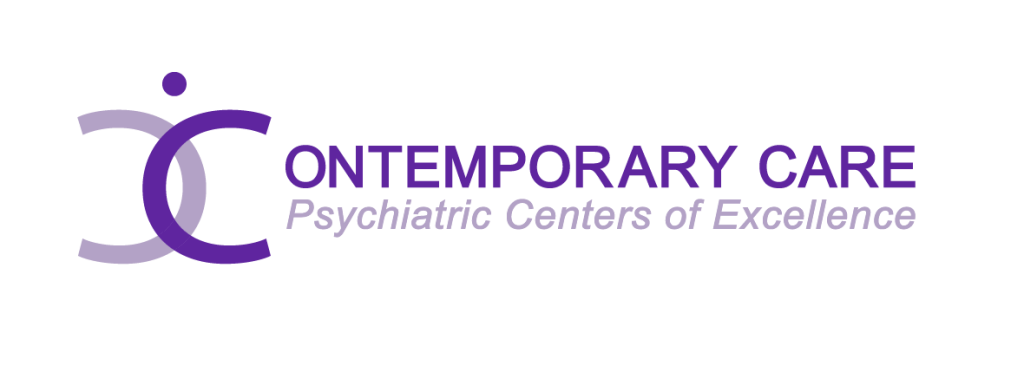In the quest for improved mental health treatments, FDA-approved esketamine intranasal spray, and intravenous Ketamine have risen to the forefront as promising options, offering new paths of hope for individuals battling conditions like treatment-resistant depression.
These medication therapy management services represent a shift in the treatment landscape, providing alternatives for those who have found traditional therapies ineffective. While both esketamine and ketamine share similarities in their potential to reduce symptoms, they also bear distinct characteristics that set them apart.
Understanding these differences is essential for individuals, as it empowers them to make informed decisions in collaboration with other health care providers.
Through this exploration, we aim to shed light on the differences between esketamine vs ketamine treatment, empowering individuals to enter a path toward improved mental well-being with confidence and clarity.
Introduction: Breaking Down the Basics
What are intranasal Esketamine and Intravenous Ketamine?
Intranasal esketamine treatment and intravenous ketamine are both forms of the same medication known as ketamine, but they possess distinct chemical structures and effects on the body.
Intravenous Ketamine, initially developed as an anesthetic and pain reliever in the 1960s, has a long history of medical use.
On the other hand, esketamine treatment administered intranasally, a derivative of intravenous ketamine, has gained attention more recently as a novel treatment for treatment-resistant depression.
Despite their shared origin, esketamine vs ketamine treatment exhibit differences in their pharmacological properties, which contribute to variations in their therapeutic effects.
While both substances have shown promise in managing treatment-resistant depression, esketamine’s unique formulation and targeted approach make it a compelling option for individuals seeking relief from unipolar major depression.
Understanding the Mechanism of Action
How Do They Work?
Understanding Glutamate Modulation
Both esketamine and ketamine make use of their effects by modulating the brain’s glutamate system, an important regulator of mood and awareness. Glutamate, the brain’s most abundant excitatory neurotransmitter, plays complex roles in learning, memory, and mood regulation functions.
Esketamine: Targeting the NMDA Receptor
Esketamine, the (S) enantiomer of racemic ketamine, is FDA-approved for adults with TRD (Treatment-resistant depression) and adults with MDD (Major depressive disorder) with suicidal thoughts or actions in combination with an oral antidepressant.
Esketamine treatment, derived from ketamine, specifically targets the N-methyl-D-aspartate (NMDA) receptor within the glutamate system. By binding to the NMDA receptor and blocking its activity, esketamine initiates downstream effects that promote synaptic plasticity and the formation of new neural connections, contributing to its antidepressant effects.
Ketamine’s Broad Mechanism of Action
In contrast, ketamine intravenous infusion is broader, involving interactions with multiple receptors in the brain, including the NMDA receptor and opioid receptors. While adjunctive ketamine treatment shares esketamine’s primary action on the NMDA receptor, its modulation of the opioid system may also contribute to its antidepressant effects.
Convergence on Common Pathways
Despite their differences in receptor targeting, both esketamine and ketamine ultimately converge on common pathways within the brain’s glutamate system to treat depression.
This convergence leads to the modulation of neural circuits associated with mood regulation, supporting their efficacy as rapid-acting antidepressants and highlighting their potential as transformative agents in the treatment of mood disorders and Reducing the risk of adverse events.
Esketamine vs. Ketamine: The Delivery Method
Intranasal vs. Intravenous ketamine Administration
One key difference between Intranasal esketamine and Intravenous ketamine is how they are administered. Esketamine is typically delivered through a nasal spray, making it more convenient for patients, while ketamine intravenously is usually given, requiring medical supervision.
Efficacy in Depression Treatment
Comparing Effectiveness
Rapid decrease in Depressive Symptoms
Studies examining the effectiveness of esketamine vs ketamine treatment consistently demonstrate their efficacy in rapidly decreasing symptoms of major depressive disorder and ensuring optimum therapeutic outcomes for targeted beneficiaries through improved medication, particularly in individuals resistant to traditional antidepressant drugs.
These medications offer hope for those grappling with treatment-resistant depression by providing relief from weakening symptoms.
Swift Onset of Action
One notable aspect of esketamine and ketamine’s effectiveness is their rapid onset of action. Many patients experience improvements in mood within hours or days following administration, contrasting with traditional antidepressants, which often require weeks or months to produce noticeable benefits.
This swift response is especially beneficial for individuals in acute distress or experiencing suicidal ideation, facilitating immediate relief and stabilization.
Variability in Duration and Administration
Despite their rapid efficacy, the duration of esketamine and ketamine’s effects and the optimal frequency of administration may vary. Esketamine, administered as a nasal spray, often requires more frequent dosing compared to intravenous ketamine, typically given intravenously.
Variations in pharmacokinetics and pharmacodynamics contribute to differences in duration of action and dosing instructions, necessitating personalized treatment plans adjusting to each patient’s needs.
Promising Alternative for Treatment-Resistant Depression
Both esketamine and ketamine offer a promising alternative for individuals fighting bipolar depression who have not responded to conventional antidepressant therapies. Their capacity to rapidly alleviate major depressive disorder symptoms and enhance overall quality of life underscores their potential as valuable additions to the mental health treatment toolkit.
Safety Concerns and Side Effects
Are They Safe?
Dissociative Effects
Among the most commonly reported side effects of esketamine vs ketamine treatment is dissociation, characterized by a temporary disconnection from one’s surroundings or sense of self.
This state may include feelings of detachment, altered conceptions of reality, or distortions in sensory experiences. While temporary, detachment can be unsettling for some individuals, emphasizing the need for close monitoring and support during treatment.
Gastrointestinal Symptoms
Both ketamine and esketamine may induce gastrointestinal symptoms such as nausea or vomiting, particularly following administration.
While typically mild to moderate, these side effects diminish over time as patients adjust to the medication.
Strategies like premedication or adjusting dosing schedules can help reduce nausea or gastrointestinal discomfort, especially for individuals prone to such reactions.
Cardiovascular Considerations
Another factor to consider in assessing the safety profile of esketamine vs ketamine is their potential to elevate blood pressure and heart rate.
Temporary increased blood pressure is commonly observed post-administration, particularly with ketamine.
While generally well-tolerated in healthy individuals, those with preexisting cardiovascular conditions or hypertension may require closer monitoring and tailored dosing instructions to minimize the risk of adverse cardiovascular effects.
Cost Considerations
Affordability and Accessibility
One practical aspect to consider is the cost of treatment. Esketamine administration, being a newer medication, may be more expensive and less accessible compared to ketamine. Insurance coverage and out-of-pocket expenses can vary, so it’s important to explore all options.
Long-Term Effects and Sustainability
Long-Term Effects and Safety Profile
As we look ahead, it’s essential to recognize the importance of ongoing research to fully explain the long-term effects and safety profile of esketamine vs ketamine treatment.
Particularly, understanding the risk of dependence or tolerance associated with extended use is of significant interest.
Exploration of Sustained Efficacy
Studies exploring the sustained efficacy of ketamine and esketamine treatment beyond the acute treatment phase are underway.
These studies aim to understand the durability of their antidepressant effects better and determine the optimal duration of treatment.
Longitudinal studies tracking patients over extended periods will provide valuable insights into the course of esketamine treatment response and the potential need for maintenance therapy or periodic examination of treatment strategies.
Identification of Predictors of Treatment Response
Ongoing efforts to identify biomarkers and predictors of treatment response hold promise for optimizing patient selection for esketamine and ketamine therapy.
By better understanding the underlying neurobiological mechanisms of treatment response, clinicians can tailor treatment approaches to individual patients, maximizing the likelihood of achieving positive outcomes while minimizing potential risks.
Advancements in Research and Clinical Practice
In the coming years, advancements in research and clinical practice will continue to shape our understanding of esketamine and ketamine’s role in mental health treatment.
Through collaborative efforts between researchers, healthcare providers, and patients, we can strive to enhance the effectiveness, safety, and accessibility of these innovative therapies.
Ultimately, these efforts aim to improve the lives of individuals affected by unipolar depression and other mood disorders.
Personalized Treatment Plans
Modifying Therapy to Individual Needs
Comprehensive Evaluation for Modifying Therapy
Modifying therapy to individual needs involves a thorough assessment of various factors to determine the most suitable treatment approach. This evaluation extends beyond symptom severity and treatment history to include medical conditions, medication tolerance, and patient preferences.
Consideration of Diverse Factors
Healthcare providers factor in various elements, such as a history of alcohol use dis or specific medical conditions, to determine whether one medication may be preferable over the other.
Additionally, lifestyle factors like work commitments or travel restrictions play a role in treatment decisions, with esketamine’s intranasal administration offering greater flexibility compared to ketamine’s intravenous route.
Importance of Ongoing Communication
Continuous communication and collaboration between patients and healthcare providers are important throughout the treatment process. Open dialogue facilitates the identification of emerging concerns or changes in treatment response, allowing for adjustments to be made as necessary to optimize outcomes.
Regular Monitoring and Assessment
Regular monitoring and assessment ensure that treatment aligns with the individual’s evolving needs and goals. This proactive approach helps healthcare providers track progress, identify any challenges, and make timely interference to ensure the best possible outcomes.
Partnership with Healthcare Providers
Ultimately, the decision between esketamine vs ketamine treatment should be made in partnership with a knowledgeable healthcare provider. This collaborative approach ensures that treatment decisions are informed by a thorough understanding of the patient’s unique circumstances, maximizing the likelihood of achieving meaningful improvement in mental health while minimizing potential risks and adverse effects.
Navigating the Path to Better Mental Health

As we go through the complexities of mental health treatment options, intranasal esketamine treatment, and intravenous racemic ketamine offer new possibilities for those struggling with bipolar major depression. By understanding the differences between this medication therapy management and considering individual needs, Contemporary Care healthcare providers can take proactive steps toward improved well-being.
Receiving the appropriate medication according to your condition is important to avoid any adverse reactions or interactions with other medications.
Dr. Tarique Perera, a renowned psychopharmacologist, holds the position of Clinical Director at Contemporary Care Centers, a leading psychiatric facility. Explore our range of services and meet our team at www.contemporarycarecenters.com. We warmly welcome new patients and accept all major insurance plans, including Medicare. To ensure safety and convenience, we provide Telehealth services as well.
Table of Contents
- What are Esketamine and Ketamine?
- How Do They Work?
- Intranasal vs. Intravenous Administration
- Comparing Effectiveness
- Are They Safe?
- Affordability and Accessibility
- Looking Ahead
- Tailoring Therapy to Individual Needs
Frequently Asked Questions
1. Can esketamine and ketamine be addictive?
Both esketamine and ketamine have the potential for misuse and dependence, especially when used improperly or in high doses. However, when used as prescribed under medical supervision, the risk of addiction is low.
2. How quickly do esketamine and ketamine work?
Esketamine and ketamine are known for their rapid antidepressant effects, often providing relief within hours or days after administration. This quick onset of action is one of the key advantages of these medications for treating severe depression.
3. Are there any dietary restrictions while using esketamine or ketamine?
There are no specific dietary restrictions associated with esketamine or ketamine infusions. However, patients should follow any guidelines provided by their healthcare provider and maintain a balanced diet to support overall well-being.
4. Can esketamine and ketamine be used in combination with other medications?
Esketamine and ketamine can be used alongside other antidepressant medications or therapy approaches, depending on individual needs. Patients need to disclose all current medications to their healthcare provider to ensure safe and effective treatment.
5. How long do the effects of esketamine and ketamine last?
The duration of antidepressant effects can vary between individuals and may depend on factors such as dosage, frequency of clinical trials, and overall treatment response. Some patients may experience sustained benefits for weeks or months, while others may require ongoing therapy.



